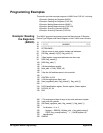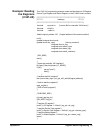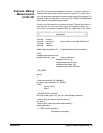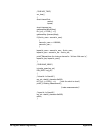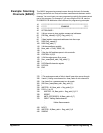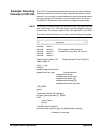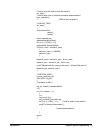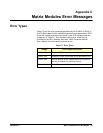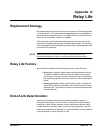
Relay Life 101Appendix D
Appendix D
Relay Life
Replacement Strategy
Electromechanical relays are subject to normal wear-out. Relay life depends
on several factors. The replacement strategy depends on the application. If
some relays are used more often or at a higher load than other relays, the
relays can be individually replaced as needed.
If all relays see similar loads and switching frequencies, the entire circuit
board can be replaced when the end of relay life approaches. The sensitivity
of the application should be weighed against the cost of replacing relays with
some useful life remaining.
NOTE Relays that wear out normally or fail due to misuse should not be
considered defective and are not covered by the product's warranty.
Relay Life Factors
Some effects of loading and switching frequency on relay life follow.
• Relay Load. In general, higher power switching reduces relay life.
In addition, capacitive/inductive loads and high inrush currents
(for example, turning on a lamp or starting a motor) reduces relay
life. Exceeding specified maximum inputs can cause catastrophic
failure.
• Switching Frequency. Relay contacts heat up when switched. As
the switching frequency increases, the contacts have less time to
dissipate heat. The resulting increase in contact temperature also
reduces relay life.
End-of-Life Determination
A preventive maintenance routine can prevent problems caused by
unexpected relay failure. The end of life of a relay can be determined by
using one or more of three methods: contact resistance maximum value,
contact resistance variance, and/or number of relay operations. The best
method (or combination of methods), as well as the failure criteria, depends
on the application in which the relay is used.



